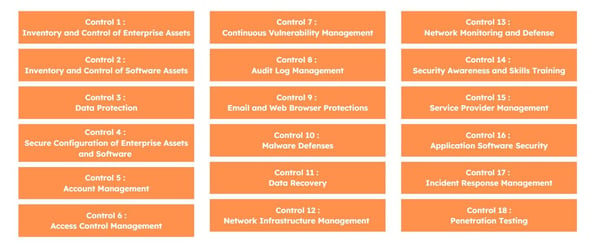What is a playbook in cyber security ?
A Cybersecurity Playbook is an essential strategic document that equips organizations to combat cyber threats proactively and reactively. It serves as a comprehensive roadmap delineating the necessary actions and strategies to identify, contain, eradicate, and recover from a variety of security incidents.
The playbook is a standardized procedure designed to provide a swift and effective response during a cybersecurity crisis, significantly mitigating the potential operational and impacts of an attack. Key components of a cybersecurity playbook regroups: detailed descriptions of potential incidents, step-by-step response and recovery processes, communication protocols, and explicit role assignments for team members.
Beyond its immediate incident response utility, a robust playbook underscores preventive measures and strategies for fortifying an organization's digital defenses. It recommends routines for continuous surveillance, routine system evaluations, and user education to preempt future threats.
Functions of a Cybersecurity Playbook :
Threat Detection :
One of the primary roles of a playbook is to help organizations identify potential threats. This can involve detailing the various signs of different types of cyber attacks and explaining how to use security tools to detect anomalies that could signify an attack.
Incident Classification :
Once a potential threat is detected, playbooks provide guidelines to classify the incident based on its severity, type, and potential impact. This helps the cybersecurity team understand the scope of the threat and determines the response priority.
Response :
Perhaps the most crucial function of a playbook is to outline the steps to respond to an incident. This includes isolating affected systems to prevent the spread of the threat, gathering evidence for further analysis, eradicating the threat, and recovering systems to their normal function.
Communication Guidelines :
Cybersecurity incidents often require cross-functional collaboration and communication. A playbook will include guidelines on who to inform (internally and externally), what information to share, and how to report the incident in accordance with regulatory standards.
Post-Incident Analysis :
After a threat has been neutralized, the playbook guides teams through a post-incident review. This process identifies the cause of the incident, assesses the effectiveness of the response, and suggests improvements for future incidents. The lessons learned are then incorporated into the playbook for future use.
Continuous Improvement :
Cybersecurity playbooks are not meant to be static documents. Instead, they are continually updated and improved based on new threats, technology advancements, and feedback from incident response experiences. This continuous improvement helps ensure that the organization is always prepared for the latest threats.
Training and Simulation :
Playbooks also serve as an essential tool for training cybersecurity teams and running simulation exercises. These activities help teams familiarize themselves with their roles in an incident response and ensure they are prepared to act quickly and effectively when a real incident occurs
What are the different types of cybersecurity playbook ?
Threat-Specific Playbooks :
These playbooks focus on a particular kind of threat, such as a phishing attack, ransomware, or a Distributed Denial of Service (DDoS) attack. For example, a phishing attack playbook might provide guidelines on how to identify phishing emails, isolate affected systems, investigate the breach, and educate staff on phishing recognition.
General Incident Response Playbooks :
This type of playbook offers a comprehensive response strategy to a variety of potential threats. It guides the response team through the steps of detecting and identifying the breach, investigating its extent, containing and eradicating the threat, and recovering the affected systems. This playbook type forms the backbone of any cybersecurity defense strategy.
Compliance Playbooks :
These playbooks are tailored to satisfy specific regulatory or compliance standards like GDPR, HIPAA, or the ISO 27001 standard. Compliance playbooks ensure that the incident response process aligns with the required regulations, reducing the risk of non-compliance penalties.
Control playbooks can also be automated, enabling a compliance automation process to be set up, reinforcing security and centralizing all proof of controls.
Emerging Threat Playbooks :
As the cyber threat landscape continually evolves, so does the need for playbooks that address newly identified threats. These playbooks deal with nascent or trending threats that haven't been fully standardized yet. They help organizations stay ahead of attackers and ensure optimal defense strategies are in place.
Tabletop Exercise (TTX) Playbooks :
These playbooks are designed to simulate potential incidents to train incident response teams. They provide hypothetical scenarios that help teams practice their response, thereby enhancing readiness for when a real incident occurs.
Benefits of Cybersecurity Playbooks :
.jpg?width=1434&height=795&name=benefits%20of%20cybersecurity%20playbooks.JPG%20(2).jpg)
Quickened Incident Response :
A cybersecurity playbook provides a clear protocol for all team members during a security incident, ensuring a fast, effective response. By reducing response time, playbooks can transform potentially major breaches into minor incidents, safeguarding key assets.
Improved Communication :
By defining roles, responsibilities, and procedures, a cybersecurity playbook simplifies communication during a security incident. This can save critical time, prevent confusion, and avoid duplication of effort. An example of effective communication management is the Crisis Communications Team (CCT), as suggested by The CNS group.
Boosted Efficiency :
With faster response times and better communication, cybersecurity playbooks increase operational efficiency during a security incident. By standardizing threat detection, prevention, and eradication procedures, playbooks reduce the time and resources spent on incident management, ensuring the organization's digital assets remain secure.
Adaptive Learning :
Cybersecurity playbooks facilitate constant refinement based on experiences from past incidents. This continuous learning and adaptability helps organizations stay updated against evolving cyber threats, enhancing overall cybersecurity resilience.
How to create a Cybersecurity Playbook ?
1 Risk and Threat Assessment: Begin by identifying and understanding the myriad cyber threats that your organization may be exposed to. This includes common threats like phishing, malware, ransomware, DDoS attacks, insider threats, and more. Conduct a comprehensive risk assessment to understand the likelihood and potential impact of these threats.
2 Asset Inventory and Vulnerability Assessment: Perform a thorough inventory of your critical digital assets, including data, applications, hardware, and network infrastructure. Run regular vulnerability scans and penetration tests to identify potential weaknesses that could be exploited by an attacker.
3 Incident Response Team Structure: Clearly outline the structure of your Incident Response Team (IRT). Define the roles, responsibilities, and hierarchy of the team, including both technical roles (like Incident Response Manager, IT personnel, and Security Analysts) and non-technical roles (like Public Relations and Legal). This also includes detailing the escalation processes within the organization.
4 Incident Response Procedures: Establish a step-by-step action plan for each identified threat. This should include procedures for initial threat detection, incident categorization, containment strategies, eradication techniques, and system recovery protocols.
5 Communication Strategy: Develop clear guidelines for internal and external communication during an incident. Internally, this involves regular updates and instructions to employees. Externally, this could mean informing affected customers, reporting to regulatory bodies, or even managing media relations, as necessary.
6 Post-Incident Review and Lessons Learned: After each incident, conduct a thorough post-mortem analysis to identify the strengths and weaknesses of your response. This process should yield lessons learned, which should then be used to refine and update the playbook.
7 Ongoing Playbook Maintenance: The cyber threat landscape is dynamic and rapidly evolving. Therefore, the playbook must be a living document that is regularly updated based on changes in the organization's IT environment, emerging threats, or feedback from incident post-mortems. Regular training and drills should be conducted to ensure all stakeholders are familiar with the playbook's protocols.
How Trout Software can help you with cybersecurity playbooks ?
Building cybersecurity playbooks :
Once steps 1, 2 and 3 above have been completed, Trout Software makes it easy for you to set up controls by creating playbooks. Specifically, our tool allows you to connect all your data points, perform analyses, and summarize the entire procedure at the top of the playbook, as shown below.
Our platform is collaborative, so you can share the playbook with the appropriate people at the right time. You can also identify someone in the playbook to assist with the current situation and improve team communication. Playbooks can be modified endlessly, making it easy to adapt them to the context and the necessary improvements.
.jpg?width=1920&height=1080&name=building%20playbooks%20with%20Trout%20Software%20(1).jpg)
Automate playbooks :
Once a playbook has been created in our platform, you can automate it to streamline your control operations and reduce manual checking tasks. The process is simple:
- Select the playbook you have just created.
- Configure the automation parameters, such as the date of the first check and the spacing between checks.
- Click on "Schedule."
.jpg?width=1920&height=1080&name=Trout%20Software%20Scheduler%20(4).jpg)
After this, all automated playbooks can be accessed via our control dashboard. We will alert you as soon as we notice any deviation from the baseline.
Conclusion :
In conclusion, a well-crafted cybersecurity playbook is a crucial asset in any organization's cybersecurity arsenal. Not only does it enhance response time and efficiency, but it also helps to maintain effective communication during security incidents. Through constant updating and refinement, a playbook can significantly enhance an organization's resilience against cyber threats.
Remember, the goal of a playbook is not just to react to security incidents but to be proactive in preventing them. With the increasing complexity and frequency of cyber threats, having a robust cybersecurity playbook is not just a recommendation, it's a necessity.



